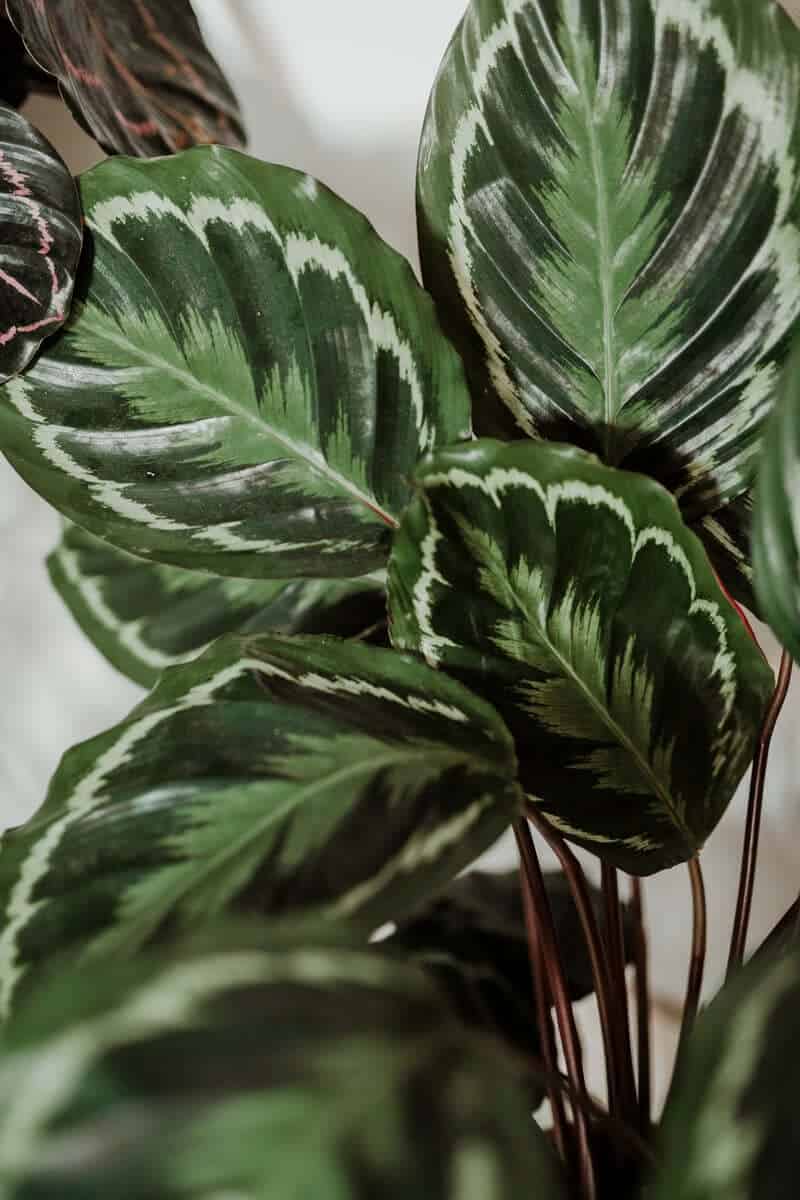Last Updated on May 26, 2023 by a Friendly Gardener
The Calathea is a very popular houseplant thanks to its colorful leaves in various shapes and sizes. Foliage can be striped or patterned on the top and feature a vivid purple hue on leaf undersides. The calathea finds itself in the same family as the Prayer plant known as the Marantaceae family. These two houseplants also share that they are classified as a nyctinasty species. These types of species fold their foliage closed during the nighttime and reopen by unfurling their colorful leaves in the morning. This herbaceous perennial is a native of Brazil.
Calathea Plant Care
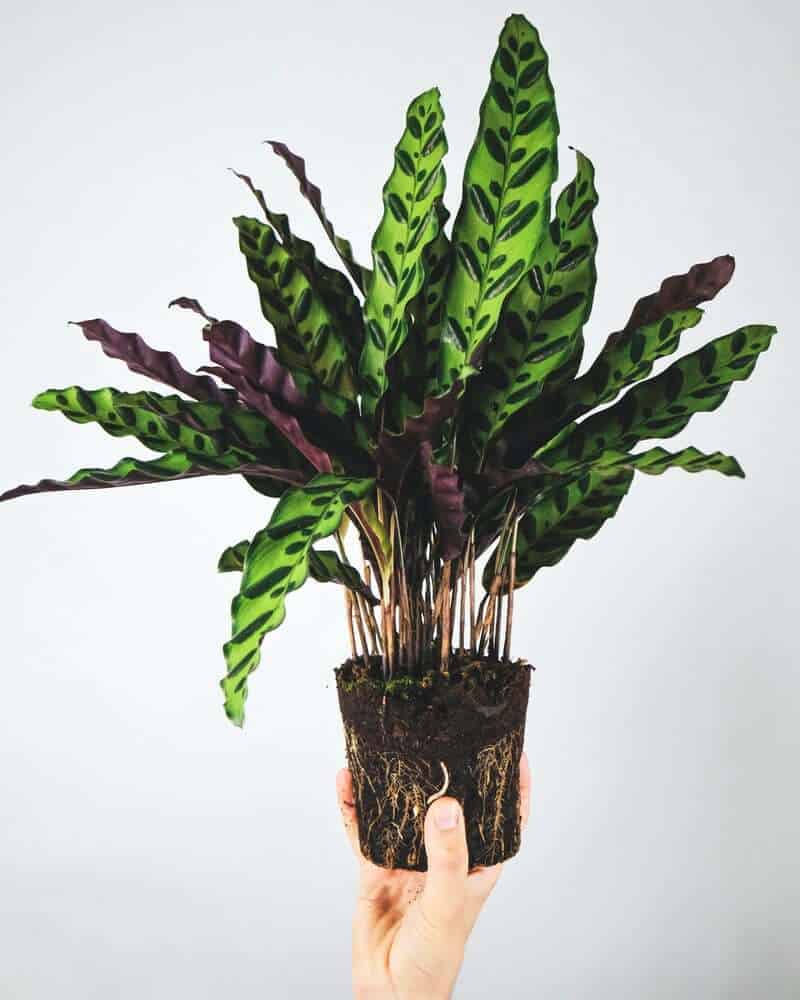
Undoubtedly the Calathea is reputed to be a finicky, somewhat difficult houseplant to cultivate. However, if you are able to create the proper conditions, care will become more simplified.
Soil
A Calathea cultivated at home ideally should have a soil bed that can retain moisture to some degree. At the same time, it must be well-draining. Quality potting soil will work very well if you aerate it often.
Consider using a chopstick, mini spade, Bonsai spade, or a knife to loosen the soil very gently. This enables better circulation of the air and water within the growing medium. Many Calathea cultivators successfully use a soil mix for African Violets. The soil pH needs to measure at approximately 6.5 so that it is acidic.
To aerate your Calathea’s soil bed, poke holes very gently in the soil’s surface but take care not to damage roots.
Light
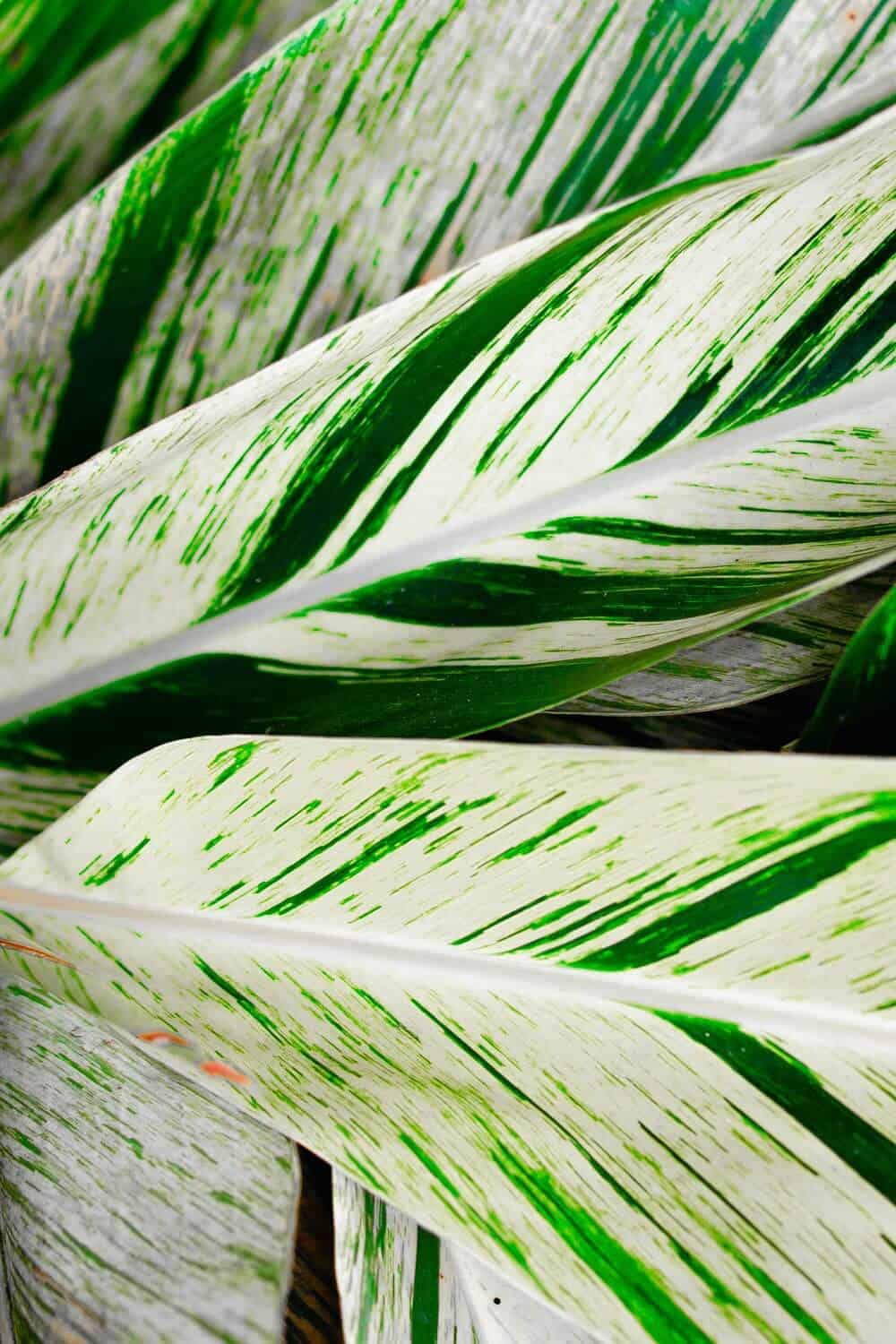
Calathea’s natural environment is a tropical rainforest. In its natural habitat, the Calathea grows on the jungle floor. Thanks to this position, they receive natural light that is filtered thanks to tree canopies towering above.
Hence the calathea does not require bright direct sunlight. It should not be exposed directly to the sun and UV rays as they will be too harsh and damage these plants. With bright, direct sun exposure Calathea’s foliage loses color and may end up being scorched.
The Calathea thrives in indirect medium light. They will do well when placed in windows that face east or west. South-facing windows are a possibility if equipped with blinds or sheer curtains. Should trees or vegetation be near enough to the south-facing window to create some shade, your Calathea may be fine.
Calatheas are capable of adapting to low light conditions, but growth will be slower.
Water
Soil beds should be maintained evenly moist. Soggy, water-laden soil will place your Calathea at risk for root rot. Water your Calathea thoroughly when the top inch of the soil bed is dry. A pot with excellent drainage is necessary for root rot prevention.
Calathea plants are sensitive to the quality of the water you use. If water is soft, hard, or contains fluoride, it is possible that leaf edges and tips will turn brown. In extreme cases. Your plant’s leaves may burn.
If you can, opt for watering with distilled water. Collected rainwater is an alternative as is filtered tap water. Chlorinated tap water can also be a problem. If your municipal water has chlorine, leave water to sit out in open air for 24 hours. This will dechlorinate water through evaporation.
Humidity

The Calathea with its tropical origins adores high humidity. Humidity levels should measure somewhat higher than those found in a normal residence or office. This becomes extremely important during winter seasons when indoor heating dries air out or if you use air conditioning in a warmer climate.
A steamy bathroom is ideal if your indoor environment tends to be dry, or perhaps a kitchen. Other alternatives for improving humidity levels include:
- Use a pebble tray. Fill a tray with pretty pebbles and water. Place your Calathea on top of the tray. Check to see if the container touches the water in the tray. It should not, it should be placed above the water. With the natural water evaporation, the humidity surrounding your Calathea will increase.
- Group your Calathea together with other houseplants. As the plants transpire, they release vapor into the immediate surrounding atmosphere. Keeping them close together will raise the area’s humidity levels and benefit all of the houseplants in the group.
- Position a small space humidifier in the area of your houseplants.
- Misting your plants regularly can help momentarily, but it is not a long-term solution.
Temperature

The tropical Calathea loves warmth, so a temperature that measures between 65° and 85°Fahrenheit is the ideal environment. Keep calathea plants away from air conditioning and heating units and vents. They also should be positioned far from drafts including windows, doors, and halls.
Feeding a Calathea
Fertilize your Calathea plant in its growing season. If new foliage does not appear, your plant is dormant so do not feed. During the spring, summer, and autumn seasons feed your plant with a diluted liquid fertilizer once a month or every two months depending on the rapidity of plant growth.
Repotting
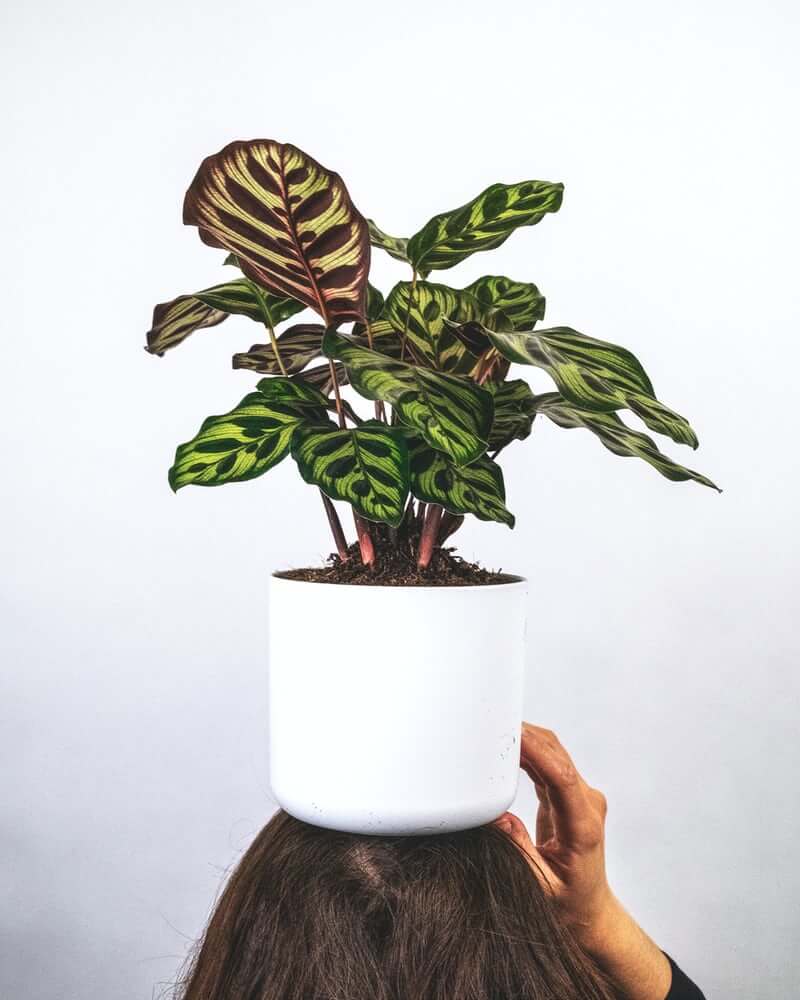
The Calathea does not require repotting very often. You should repot if you see symptoms that your Calathea is root-bound. Roots will peek from drainage holes. Gently slide your plant from its pot. If its roots wind around the container, repot. Select a new pot that is one size larger. Remove old soil from the root ball and substitute with fresh potting mix.
Calathea Toxicity
The ASPCA-American Society for the prevention of Cruelty to Animals informs us that the Calathea plant is non-toxic for dogs and cats.
Calathea Problems
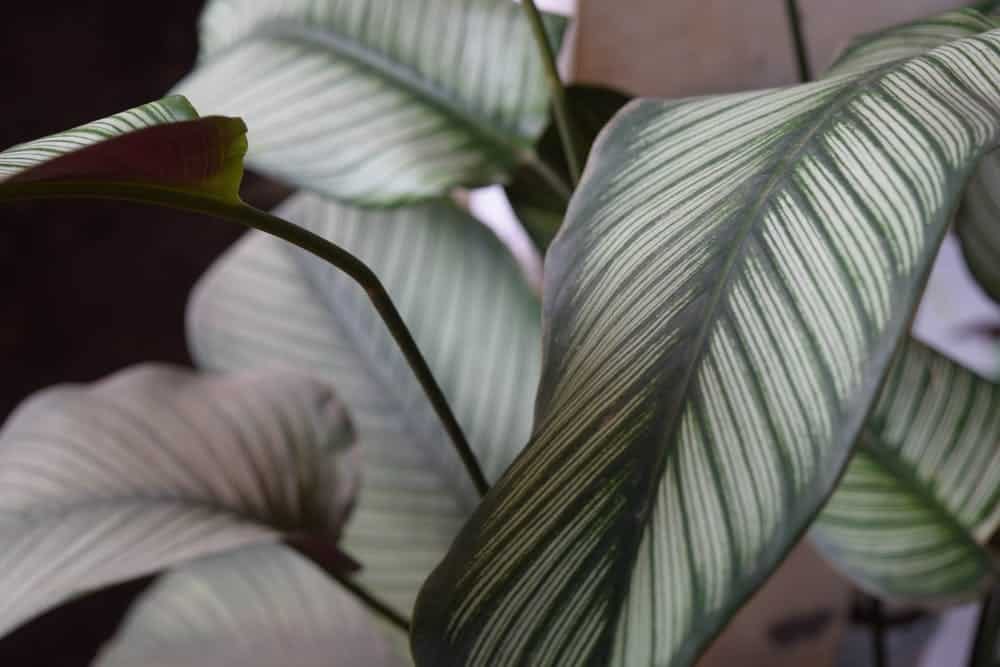
Should your calathea exhibit any of the following symptoms, check your care procedures and schedule:
- Leaves are brown-edged or spotted – Temperature or the quality of the water may be affecting foliage. Try watering with distilled or rainwater.
- Leaf edges are dry or crispy – Increase the area humidity.
- Leaves are curling – The humidity may very well be too low, or the room temperature is too high.
- Foliage color is fading – faded leaves usually mean that there is an excess of direct sunlight exposure. Move your plant to a different spot.
- Leaves do not close during the nighttime – Your plant is too close to a source of light.
- Foliage is yellowing – This is evidence of overwatering. Reduce watering. If the yellowing continues, look at the roots for root rot and consider repotting.
Disease and Pests
The spider mite is your plant’s biggest threat. But aphids, scale, and mealybugs will easily take up residence if given the opportunity. Treat your Calathea with an organic insecticidal soap or Neem oil.
The Calathea is susceptible to fungal infections and can be treated with a fungicide. Neem oil also acts as a natural organic fungicide. The Calathea is also susceptible to Bacterial Leaf spots.
Calathea Varieties

Calathea Plants are available in numerous varieties. Choosing will be a question of personal taste. Among these we find:
- Calathea lancifoliaor Rattlesnake Plant
- Calathea makoyana also referred to as the Peacock Plant
- Calathea musaicaor Network Plant
- Calathea ornate – also known as the Pinstripe plant
- Calathea roseopicta popularly called the Medallion Calathea
- Calathea rufibarbaor Furry feather plant
Why a Calathea?
Although not necessarily the ideal plant for a beginner, or those that travel or are busy, the Calathea is glorious in color and pattern when the correct environmental conditions are guaranteed. If you’re willing to go the extra mile to create proper cultivation conditions, this is one stunning plant.

